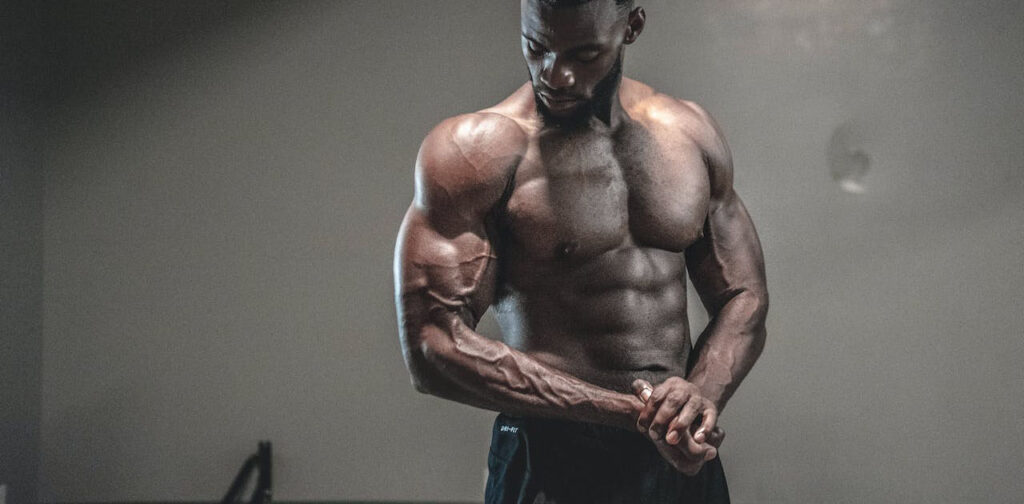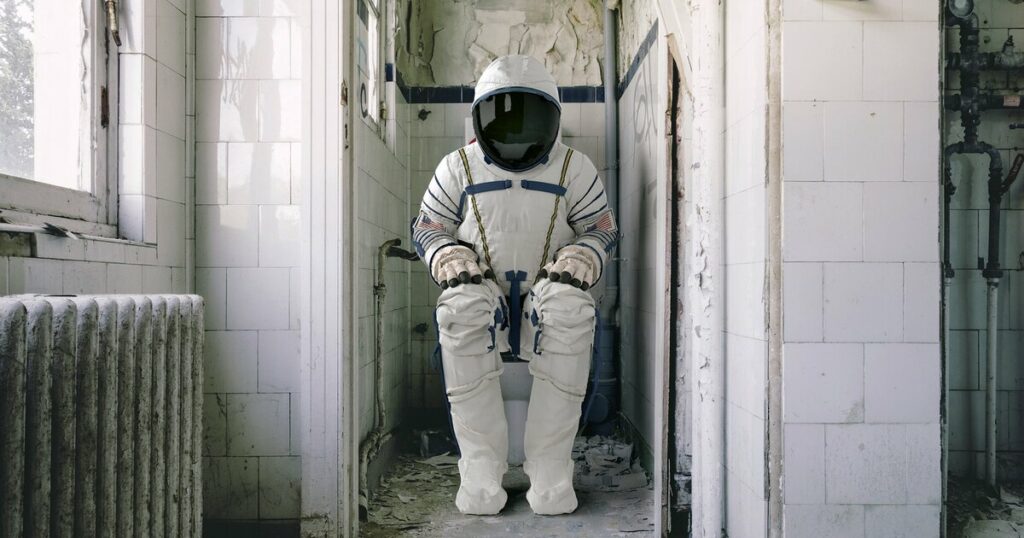Creatine is a go-to supplement for fitness buffs aiming to pump up muscle gains. But whispers in the locker room questioning, does creatine cause gynecomastia or unwanted chest growth in men, have raised eyebrows. Is there truth to the rumors, or is it just gym folklore? Before you consider ditching your creatine tub, let’s delve into the facts and shed light on this muscle-building mystery.
On this page:
What Is Gynecomastia? Understanding the Basics
Gynecomastia is a condition that causes the breast tissue in boys and men to swell and become larger than normal. It’s not the same as the extra fat we see in some guys with “man boobs” from gaining weight. Gynecomastia happens when a guy’s hormones are out of balance, and there’s too much estrogen, the hormone that women have more of, and not enough testosterone, which is the hormone that makes men look and feel like, well, men.
This condition can affect one or both breasts, sometimes unevenly. Newborns, boys going through puberty, and older men may develop gynecomastia as a result of normal changes in hormone levels, though other causes also exist. It’s also not uncommon. In fact, up to 70% of boys get it during puberty.
Even though gynecomastia can be uncomfortable and might make some guys feel self-conscious or embarrassed, it’s usually not a serious problem. In many cases, it goes away on its own. However, if it’s caused by an underlying health issue, like a problem with the thyroid, that condition needs treatment.
Does Creatine Cause Gyno: The Role in Muscle Development
Creatine is a natural substance that plays a crucial role in energy production within muscles. When you take creatine supplements, you’re basically giving your muscles more fuel. This extra energy can help you work out harder and longer. Think of it like adding a turbo boost to your car – suddenly, you have more power and endurance.
Now, when you exercise, especially when you do weight training, you create tiny tears in your muscle fibers. Your body repairs these tears and, in the process, makes the muscles stronger and bigger. This is where creatine steps in – it helps speed up this repair process. By doing so, creatine can help increase your muscle mass and improve your strength over time.
Another thing creatine does is draw more water into your muscle cells. This can make your muscles look bigger and feel fuller. While some worry that this is just temporary “water weight,” this extra water is actually beneficial. It helps keep the muscles hydrated, which can improve your performance and reduce the risk of injury.
Also, creatine isn’t just about bulking up. It can help with muscle endurance as well. In sports that require quick bursts of energy, like sprinting or heavy lifting, creatine can be a game-changer. It gives you that extra push to squeeze out one more rep or shave a few seconds off your time.
Does Creatine Cause Gynecomastia? Investigating Hormonal Influences
Creatine is well-known for its muscle-boosting benefits, but some people worry it could mess with hormone levels. Let’s clear things up: creatine doesn’t act like steroids. Instead, it gives your muscle cells the energy they need to work out harder and longer. Now, hormones like testosterone and estrogen are key players in body development, and an imbalance can lead to gynecomastia—that’s when guys get breast tissue swelling.

So, the question arises, does creatine cause gyno by shaking up these hormones? Research says no. Studies show that taking creatine doesn’t mess with your body’s hormone levels in a way that would cause creatine gynecomastia. Sure, creatine can slightly increase testosterone, but not enough to create a problem. And it doesn’t hike up estrogen levels at all, which is the real troublemaker for gynecomastia.
Some gym-goers might think they’re seeing signs of hormone imbalance, like weight gain or feeling a bit puffy, but these are usually just side effects of creatine drawing more water into the muscles. It’s not actual fat or breast tissue growth. Remember, creatine pulls water into your muscles, making them look bigger and fuller. This can sometimes be mistaken for gynecomastia, but it’s just a temporary effect from the extra water, not a hormonal issue.
Scientific Evidence: Creatine Gynecomastia Link
The majority of studies point to no. Creatine is a substance found naturally in muscle cells, helping your muscles produce energy during heavy lifting or high-intensity exercise. It doesn’t directly affect hormone levels to the extent that would cause breast tissue growth.
A study published in the “Journal of the International Society of Sports Nutrition” found no increase in estrogen levels with creatine supplementation. What’s more, a review in the “Clinical Journal of Sport Medicine” noted that creatine has been extensively researched, and no data suggests it alters hormonal levels associated with gynecomastia.
So, why the confusion? Well, some folks taking creatine report weight gain due to increased water retention in muscle cells. This can sometimes lead to wondering ‘does creatine cause gynecomastia,’ which is actually about fat, not water. But actual breast tissue growth? The evidence isn’t there.
It’s also worth mentioning that while research is robust in many areas, the long-term effects of high doses of creatine haven’t been studied as thoroughly. That means staying informed and cautious is key.
Other Potential Causes of Gynecomastia in Fitness Enthusiasts
While creatine often takes the spotlight in discussions about supplements and their side effects, it’s important to recognize that gynecomastia in fitness enthusiasts can stem from various other factors. Hormonal imbalances play a central role, particularly when there’s an elevated level of estrogen or a decrease in testosterone. This imbalance can be triggered by using anabolic steroids or androgens, which some bodybuilders turn to for accelerated muscle growth.
Another potential instigator is medication. Certain drugs, including anti-androgens, antibiotics, and ulcer medications, have been linked to the development of gynecomastia. It’s also worth noting that alcohol and substances like marijuana can disrupt hormone levels and may contribute to breast tissue growth.
Diet and lifestyle choices can’t be overlooked either. Foods that are high in soy or phytoestrogens mimic the activity of estrogen in the body and could potentially increase the risk. Moreover, poor dietary choices leading to obesity can result in higher levels of estrogen, as fat tissue is capable of converting testosterone into estrogen.
Other health conditions, such as hyperthyroidism, kidney failure, or liver disease, could be the real culprits behind gynecomastia. These conditions can affect the body’s hormonal balance and lead to the enlargement of breast tissue.
Managing Risks: How to Use Creatine Safely
Start with a lower dose to see how your body reacts. Many experts suggest beginning with a ‘loading phase’ of 20 grams per day, divided into four servings, but this isn’t a must. You can also stick to a steady intake of 3-5 grams daily, which is a common maintenance dose. This approach gives your muscles the creatine they need without overdoing it.
Staying hydrated is also important when using creatine. Because creatine pulls water into your muscles, drinking plenty of fluids can help avoid potential side effects, like cramps or digestive issues. Aim for water — lots of it. Not sure how much to drink? A good rule of thumb is to take your weight in pounds, divide it by two, and drink that many ounces of water each day, plus a little extra when you’re working out hard or if it’s hot.
Balance is your friend when it comes to working out and supplementing. Eating a diet rich in whole foods provides a solid foundation, ensuring you get a mix of vital nutrients alongside your creatine supplement. Protein, carbs, fats, vitamins, and minerals all work together to support your body’s health and your fitness goals.
Keep check-ups with your healthcare provider regular. They can help monitor your health, offering advice tailored to your personal needs and any concerns you might have about supplements and their effects.
Addressing Concerns: Preventing and Treating Gynecomastia
The key here is to understand what triggers the condition. Hormone imbalances, notably an excess of estrogen or a decrease in testosterone, are common culprits. To keep these hormones in check, maintaining a healthy lifestyle is crucial. This includes regular exercise, a balanced diet, and managing body fat levels, as excess fat can lead to higher levels of estrogen.

For those already dealing with gynecomastia, treatment options vary. Mild cases may benefit from lifestyle changes, like ramping up fitness routines or tweaking diets. However, more pronounced cases might require medical intervention. Medications are available that can balance hormone levels and reduce breast tissue swelling. In situations where discomfort or emotional stress is significant, surgery might be considered to remove excess breast tissue.
It’s also important to review any supplements you’re taking, as some can impact hormone levels, potentially aggravating gynecomastia. If you’re concerned about creatine or any other supplement, consult a healthcare professional. They can offer guidance tailored to your situation and help you continue working towards your fitness goals without unnecessary worry about gynecomastia.
The Bottom Line: Separating Fact from Fiction
There’s a lot of talk out there, but here’s the deal: The prevalent question, does creatine cause gynecomastia, isn’t backed by solid science. The concern comes from the fact that creatine can increase levels of dihydrotestosterone (DHT), which has a complicated relationship with hormones like estrogen and testosterone. However, gynecomastia typically involves an imbalance of these hormones, not just a change in one.
So, while creatine does impact your body in various ways, saying it leads to gynecomastia is stretching the truth. Most studies haven’t found a direct link. Instead, they suggest that if you’re using creatine as recommended, and you’re not ignoring other parts of a healthy lifestyle, you probably don’t have to worry about developing man boobs just because you’re taking a supplement to pump up your workout.
It’s like this: if you eat well, exercise correctly, and use supplements responsibly, creatine is more likely to give you the muscle gains you want without the unwanted side effects. Remember, everyone’s body responds differently to supplements, so it’s about finding what works for you while keeping an eye on the whole picture.
Making Informed Choices in Your Fitness Journey
Understanding the science, recognizing the role of hormones, and separating fact from fiction empowers you to use supplements like creatine wisely. Always consider your unique health profile and consult with a healthcare professional when in doubt. Knowledge is power, and with the insights from this post, you’re better equipped to make decisions that support your health and fitness goals while minimizing risks. Fitness is a personal journey, and what works for one may not work for all. Stay informed, stay safe, and keep pushing forward towards your aspirations.



